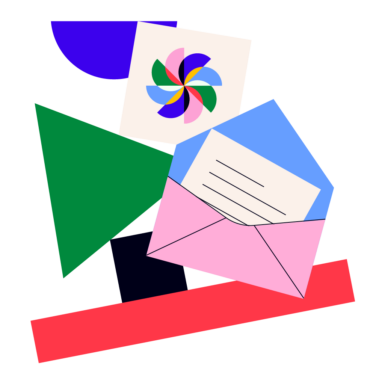Most digital marketing ads—Instagram ads for H&M clothing or display ads pushing a Disney+ subscription, for example—are for low-ticket items. For consumers, making the decision to spend $10-$20 only requires a short buying cycle, but high ticket digital marketing requires significantly more education.
By offering webinars, whitepapers, and personalized consultations, you can create a logical path for prospects to follow along the customer journey, with high-quality content at each touchpoint. While this requires a significant time investment, the payoff is worth it. Here's how to do it all successfully.
What Is High Ticket Digital Marketing?
High ticket digital marketing is the act of leveraging digital marketing platforms to support the sale of high ticket items. These are both high-value and high-priced products or services, such as enterprise software, a house, or a car.
When you’re marketing high ticket products, two things are true:
- You’re selling premium items.
- You’ve built your marketing strategy around a more complex buying process.
Buying a high ticket item takes time, and high-value items tend to convert at a lower rate. The average B2B ecommerce conversion rate is 1.8%, while the conversion rate for professional services hovers around 4.6%. As a result, high ticket digital marketing strategies focus on nurturing leads over time, providing in-depth customer education, and building relationships with customers.
High ticket digital marketing campaigns tend to focus on areas like:
- Brand perception: The right marketing messages can create a luxury association with your brand, and a willingness to pay higher prices.
- Customer education: Customers who are familiar with your brand still need education before reaching a buying decision. This happens on your website, social media, and any other marketing channel your customers frequent.
- Lead nurturing: Customers need time to get familiar with your brand and product, and to build trust. Carefully nurturing leads ensures that your brand is top of mind when customers are ready to buy.
- Personalized attention: Buyers of high ticket items often need more hand-holding during the customer journey, especially for complicated products like enterprise software. Live demos and 1:1 product walkthroughs are common in the world of high ticket sales.
What Are High Ticket Items?
In the business world, enterprise software is a common high ticket item. HubSpot's enterprise marketing software costs a whopping $43,200 per year.

To nudge users down the customer journey, HubSpot has developed a massive content marketing library: tens of thousands of blog posts, along with eBooks, guides, and courses. Other examples of high-ticket items include:
- Jewelry
- Real estate
- Electronics
- Online courses
- High-end clothing
- Boats, cars, and recreational equipment
Steps To High Ticket Digital Marketing Success
High ticket items require an in-depth strategy that takes into account every stage of the buyer's journey. Following a five-step sales funnel allows you to methodically consider your customer’s experience—from the moment they first encounter your brand to when they purchase and become a brand advocate.
1. Awareness
Customers can’t buy from you if they’ve never heard of you.
Awareness happens on digital marketing channels like Facebook Ads, LinkedIn, SEO, remarketing ads, and pay-per-click advertising. By building a presence across these channels—focusing on those where your target audience spends time—you’ll start to fill the top of your funnel with potential customers.
2. Interest
Once customers know about you, you’ll need to create interest.
To do this, your product needs to resonate with the specific problems or needs your customers have. But they aren’t ready for a sales conversation yet—and they might not even know they want what you’re offering.
At this stage in the funnel, focus on customer education to deepen customers’ understanding of your product. Create engaging content across a variety of formats like blog posts, eBooks, videos, webinars, and social media. Be sure to capture email addresses so you have a chance to nurture customers over time.
3. Evaluation
At the evaluation stage, potential customers are comparing your offering with others on the market. Right now, they’re still skeptical.
They want reassurance that your product is the best choice for them and that it will solve their problems. This is where case studies, testimonials, and in-depth product reviews come in handy.
You’ll want to consider offering a free trial or live demo to give customers a firsthand experience of what they can expect.
4. Purchase
Finally! The big moment has arrived. Your potential customer is now ready to make a purchase, but don’t make the mistake of assuming this part is easy.
70% of online shoppers abandon their carts without purchasing. While some level of cart abandonment is natural, it’s a problem when customers leave due to a poor experience during the checkout process.
Common reasons for abandoning a purchase include:
- The site required users to create an account
- Complicated checkout process
- The credit card was declined
- Delivery was too slow
- Website had errors
Make sure your purchase process is as seamless and straightforward as possible to avoid any last-minute hesitation. Give customers multiple payment options and be transparent about costs, including shipping and additional fees.
5. Loyalty/Repeat
Even after the purchase, the customer journey is far from over. Arguably one of the most crucial stages begins at this point: Cultivating customer loyalty.
High-ticket items often provide opportunities for repeat purchases, upsells, or cross-sales of complementary products or services. Satisfied customers can become your most powerful brand ambassadors, creating awareness and driving referrals your way. But, this depends on the relationship post-purchase.
Stay connected with your customers through email marketing, personalized offers, and social media engagement. Consider implementing a customer loyalty program to reward repeat business. And make sure your post-purchase support leaves customers raving about how great it is to work with you.
Secure Your High Ticket Buyers
The average customer gets more than 70% of the way through the decision-making process before ever reaching out to sales representatives.
Just like low-ticket consumers, high-ticket consumers do serious research on their own before ever making brands aware of their interest. Whether it's sales for your own product or commission from high ticket affiliate marketing you're after, this means high ticket digital marketing is more important than ever.
The goal is simple: create awareness, then give prospective customers the resources to educate themselves as they go along the path to purchase.
For more online marketing tactics and tips, be sure to subscribe to The CMO newsletter for all of the latest insights from experts straight to your inbox.


